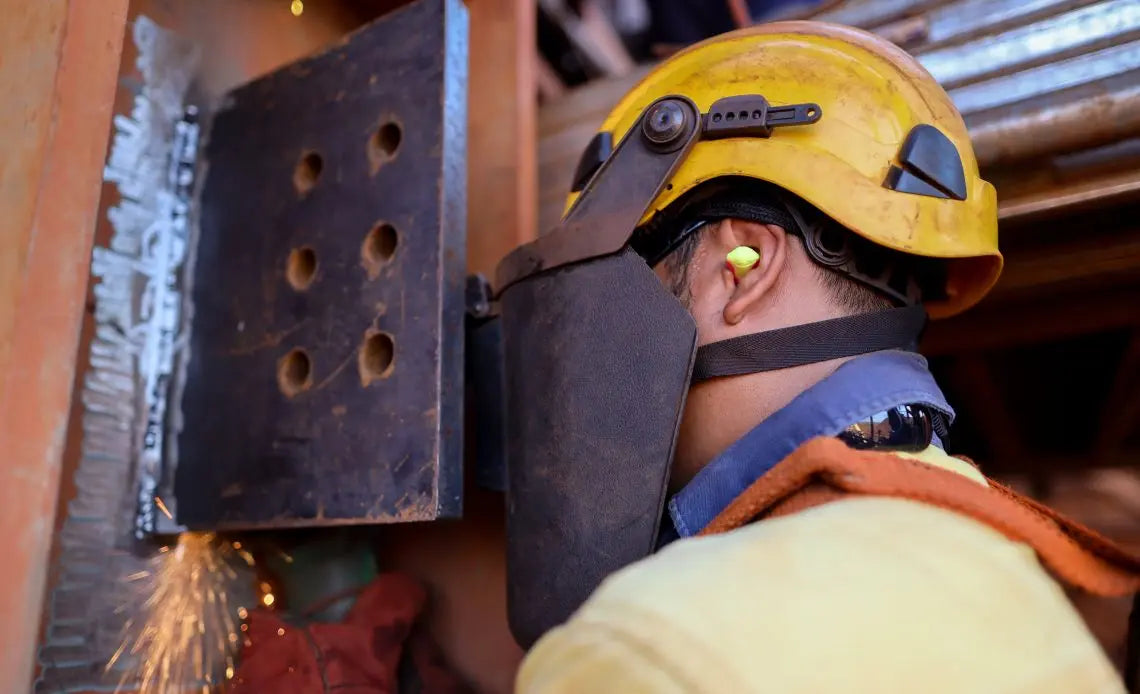Annually, about 30 million individuals in America are exposed to hazardous noise at their place of work. Without the presence of ear plugs, such exposure can wreak serious damage on workers’ hearing. For more than a quarter of a decade, occupational hearing loss has been listed as one of the nation’s most prevalent occupational health concerns. The Bureau of Labor Statistics (BLS) reports that since 2004, approximately 125,000 workers have suffered significant, permanent hearing loss as a result of occupational exposure to high noise levels. Short-term exposure to loud noise can produce temporary loss or disabling of hearing, or it may produce tinnitus (a ringing in the ears). Exposure to high levels of noise can also cause permanent, irreversible hearing loss, remediable by neither hearing aids nor surgery. The risk of permanent damage is greater with repeated or regular exposure, as at a noisy workplace.
Risk of wearing wrong ear plugs
Wearing the right type of ear plugs can help to preserve your hearing ability in both the short and the long term. If the noise or sound level at your workplace exceeds 85 decibels (A-weighted), you are at risk of hearing damage without earplugs. If you have to shout to be heard by a coworker standing at arm’s length, or if you experience a ringing or humming in your ears after leaving work, it is a sure sign that the noise level is high enough at your place of work to make ear plugs a wise choice.
To ensure comfort and hearing protection, select the right type of ear plug for you and your particular working environment. Ear plugs — as distinguished from other hearing protection devices (HPDs), such as industrial protective ear muffs — are inserted directly into the ear canal. Plugs are generally inexpensive and simple to use. Also, ear plugs are often more comfortable to wear than muffs or noise canceling electronic headsets, particularly in hot or damp work areas.
Pre molded ear plugs are preformed and rigid, typically made from plastic. This type is often mass-produced to fit any ear, though such plugs will generally fit some ears more effectively than others. Customized plugs molded from plastic to form your own ear canal can provide improved comfort and hearing protection. Premolded ear plugs are often reusable.
Moldable ear plugs, typically made of foam, adjust their shape to cleave to the walls of the ear canal of whoever is wearing them. They are also softer than pre-molded ear plugs, and so may be more comfortable to wear. Moldable ear plugs are available in multiple sizes to fit different ear canals, and they can provide the highest level of hearing protection. This particular type is disposable.
Hearing bands feature ear plugs are held over the ends of the canal by a rigid headband. They do not penetrate as deeply, and so do not provide the same level of protection as other kinds of ear plugs. They are similar to other types of protection, like corded ear plugs, in that they keep both ends of the device together at all times, lowering the potential for loss. This type of ear plug is easier to remove, and so it may be a preferable choice where noise will be only intermittent.
Earplugs for effective hearing conversation program
Earplugs and other HPDs can be a crucial part of a workplace’s effective hearing conservation program, but they should not constitute the worker’s only defense against noise. Several engineering and administrative controls can and should be put into place to reduce the amount of hazardous noise at the workplace. It is the employer’s duty to ensure that the workplace noise level does not exceed the legal limit, determined by OSHA, of 90 dBA over an 8-hour day. Where noise levels approach the limit, employers should take measures to minimize the hearing loss risks faced by workers. For instance, where applicable, employers can reduce sound by maintaining and lubricating noisy equipment, enclosing or isolating the source, and limiting the amount of time workers spend near the originator.
Where ear plugs are called for, the best type for you may vary depending on the individual. OSHA requires employers to offer a “variety of suitable hearing protectors” to noise-exposed workers. Studies have shown that workers who choose their own versions often have improved hearing protection. If one type of plug doesn’t work for you, try another — it could save your hearing!

